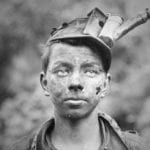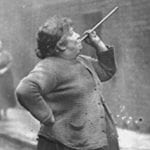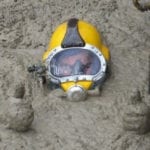 Technology
Technology  Technology
Technology  Humans
Humans 10 Everyday Human Behaviors That Are Actually Survival Instincts
 Animals
Animals 10 Animals That Humiliated and Harmed Historical Leaders
 History
History 10 Most Influential Protests in Modern History
 Creepy
Creepy 10 More Representations of Death from Myth, Legend, and Folktale
 Technology
Technology 10 Scientific Breakthroughs of 2025 That’ll Change Everything
 Our World
Our World 10 Ways Icelandic Culture Makes Other Countries Look Boring
 Misconceptions
Misconceptions 10 Common Misconceptions About the Victorian Era
 Mysteries
Mysteries 10 Strange Unexplained Mysteries of 2025
 Miscellaneous
Miscellaneous 10 of History’s Most Bell-Ringing Finishing Moves
 Technology
Technology Top 10 Everyday Tech Buzzwords That Hide a Darker Past
 Humans
Humans 10 Everyday Human Behaviors That Are Actually Survival Instincts
 Animals
Animals 10 Animals That Humiliated and Harmed Historical Leaders
Who's Behind Listverse?

Jamie Frater
Head Editor
Jamie founded Listverse due to an insatiable desire to share fascinating, obscure, and bizarre facts. He has been a guest speaker on numerous national radio and television stations and is a five time published author.
More About Us History
History 10 Most Influential Protests in Modern History
 Creepy
Creepy 10 More Representations of Death from Myth, Legend, and Folktale
 Technology
Technology 10 Scientific Breakthroughs of 2025 That’ll Change Everything
 Our World
Our World 10 Ways Icelandic Culture Makes Other Countries Look Boring
 Misconceptions
Misconceptions 10 Common Misconceptions About the Victorian Era
 Mysteries
Mysteries 10 Strange Unexplained Mysteries of 2025
 Miscellaneous
Miscellaneous 10 of History’s Most Bell-Ringing Finishing Moves
10 Absurdly Deadly Military Jobs
War is hell. During any military conflict, any active-duty job in the military is going to be a deadly one. From front-line fighters to supply line and logistics workers, medics and other first responders, and various other support staff roles, fighting a war is no safe or easy thing. That should all go without saying, of course. But beyond the deadly risks all soldiers, seamen, and airmen undertake when they go into battle, some jobs turn out to be quite a bit worse than others.
In this list today, we’ll take a deep dive into some of the deadliest and most dangerous military jobs in history. These roles were populated by men who risked everything for the success of their side. Some went down as heroes; many more were killed in forgotten moments long since washed away by the relentless rush of time. But however it all ended for them, the men who fought battles doing these ten duties put their lives on the line far more than even an “average” active-duty fight. These were their shocking, sad, and absurdly deadly duties when war came calling.
Related: Top 10 Terrible Jobs Boys Have Done Through History
10 Submariner (World War II)
Submarines had been used in battles long before World War II. Civil War soldiers from the Union and Confederacy experimented with various early submarines. Elsewhere, in Europe, they were being used and developed for decades before the late 1930s.
However, even in major prior battles like World War I, they weren’t quite as common as they were during the time Adolf Hitler swept into power in Germany. With both German U-boats and Allied submarines, thousands more men went down into the depths to wage war from far below the surface than they ever had before. Sadly, thousands died in crashes, accidents, explosions, and attacks.
Submarine technology was still somewhat undeveloped when World War II broke out. Conditions within the subs were pitiful. Men were crammed in every which way. Accidents, depressurization, gas leaks, and dreaded depth charges all made the vessels out to be underwater coffins. Plus, the war occurred at a time when submarine technology was just good enough to put it in widespread use. So both sides lost submariners at an unbelievable rate during the long war as each faction tried to get the most out of their newfound sea-borne battle tactics.
In fact, of roughly 16,000 American submariners who served in the fight, nearly 4,000 died in action. A 25% chance of death, even in war, is insane! Plus, up to 30,000 more British and other allied submariners perished during the fight too. But it wasn’t nearly as insane as what the Germans were up to during that same period.
Roughly 41,000 German men served on submarines during Hitler’s long war. Unbelievably, historians today estimate that about 28,000 of them were killed in action. In other words, any German man who took on a U-boat gig in the fight stood a 2-in-3 chance of dying in terror deep down in the sea. We sure don’t like those odds…[1]
9 Trench Runner (World War I)
As bad as World War II was, from a pure fatality standpoint, World War I was even worse. The Great War, as it was known at the time, saw millions of horrendous casualties as new technologies swept across the battlefield. From noxious gasses being used liberally to fighter pilots dying high overhead during dives bombs (and we’ll get to that in a moment), soldiers on all sides of the Great War experienced terrible ways to perish. Perhaps the worst of those manners was working as a runner.
Runners were used to send signals and messages from trench to trench—and battalion to battalion—during the war. Wireless communication technology was very much a theory more than a practical application during World War I. What little wireless ability there was often faltered at the slightest weather problem or technical issue.
So young soldiers were tasked to become runners when messages needed to get out. Those men were almost always very low-ranking non-commissioned officers. And they all had just one trait in common: they had to be physically fit. It’s in their very job title, after all.
When a battalion needed to get a message out, they would task the runner with sprinting up and out of the trench and going into the open plain. There, they would have to run like hell to whichever other trench needed to hear their fellow soldiers’ plans. These messengers were forced to pop up over the relative safety of the trenches and come under immediate fire from the other side. The phrase “don’t kill the messenger” far predates World War I, of course. But it’s not like soldiers followed its suggestion, anyway.
When runners popped up to deliver messages to other areas, they were made immediate targets. Soldiers frustrated by the drudgery and terror of trench warfare used these runners as target practice. Artillery shells and incendiary devices far beyond what was necessary to kill just one soldier were aimed at these poor young men.
For many men buried deep down in the trenches, a runners’ presence might be the only action they saw for days. So they cherished the opportunity to get an easy kill. “With a runner,” a World War I veteran commented years later, “it was merely a question of how long he would last before being wounded or killed.”[2]
8 Tin-Opener (World War I)
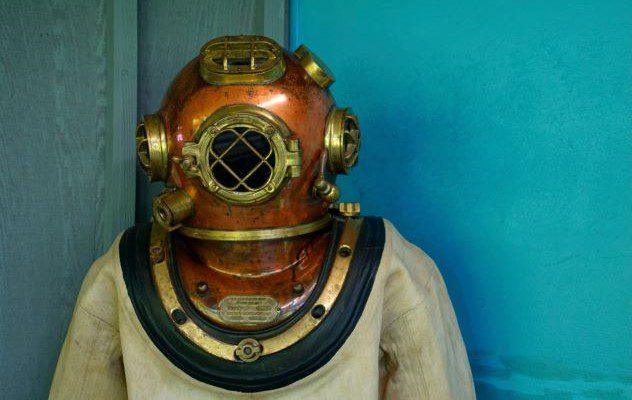
Submarine technology was bad enough during World War II, as we’ve learned. But a few decades earlier, in the throes of World War I, it was far more rudimentary—and thus, even more deadly. While there weren’t as many men going down into the depths, and therefore not the same raw number of fatalities, at least one Great War water gig proved truly terrible. These men were known as the “tin-openers,” and their job was to secure submarines from enemy interests after they were sunk deep down to the ocean bottom.
Basically, both the Allies and the Germans had a ton of coded messages and cryptologic communications on board their submarines in the war. So when a submarine was sunk by an opponent, the vessel’s remnants became highly prized as they drifted down to the sea floor. Recognizing this, the British Royal Navy started employing teams of deep-sea divers to raid sunken German U-boats.
The navy’s hope was that these men could come away with ciphers, codes, and keys to secret messages. In turn, those ciphers could theoretically help the British intercept and translate other future German military messages. Seems like a great idea, right? Why not go behind enemy lines and steal their submarine signals? Well, there was only one tiny problem: the men tasked with diving down to this intel died very, very often.
For one, most submarines were sunk in areas where there were active ocean minefields. So many divers were blown up in mine explosions long before reaching the sea floor. For the lucky few that did make it down to the sunken subs, most of those wasted vessels still had active torpedoes and other live ammunition rounds. One wrong move meant a practical guarantee to be blown up by the U-boat’s own guns.
Explosives aside, the very act of diving deep into the North Atlantic, often to depths of hundreds of feet or greater, was its own terrible journey. Dive suit technology was not nearly as good as it is today. Oxygen pipes often faltered, and the unbearable pressure of the depths forced many men to succumb in gruesome and grisly ways. Being so far beneath the surface meant that small mistakes quickly festered. And there was no medic help down in the depths. These tin openers had an important job, but it was also terrible.[3]
7 Greek Fire Operator (Byzantine Era)
Not all deadly war duties came around in the 20th century. In fact, there were many awful military jobs historians have uncovered from centuries before. And many more from ancient history that we’ll probably never know about. One we do know some about today is a role known as the “Greek Fire” operator.
Greek Fire was basically an ancient flamethrower. It was used by the Byzantine Empire during its wars and conquests as early as the fifth century. Historians know now that it was very infamously used several times to save Constantinople from invasions. Most notably, Greek Fire was employed as a vicious flame-tossing defense against Arab hordes who tried to take Constantinople by force in AD 678.
Accounts from the time claim Greek Fire was a flame technology spurred on by piping in water. So only other substances like urine, sand, or vinegar were able to douse the flames. As centuries-old accounts claim, Greek Fire operators were ordered to shoot the water-based liquid through bronze tubes at a target.
The tubes were usually on ships, though some battles employed their use on land, too. The liquid had been preheated and pressurized. So when it was shot out of the tubes, it sometimes went nearly 100 feet (30.5 meters). Through the pressurization, it would catch fire as it was shot, releasing a volley of fatal flames.
Of course, it wasn’t just the Byzantine Empire’s enemies who would have suffered at the hands of Greek Fire. The primitive technologies of the time would have undoubtedly ensured the men operating the device were constantly—excuse the pun—going down in flames as well.
Statistics for that type of fiery death are impossible to determine today, of course. But we know, based on historians’ interpretation of ancient texts, that Greek Fire was a feared battle tactic all throughout the region. We also know the ships on which it was employed often caught fire themselves amid the chaos of war. In that sense, the Byzantine Empire’s greatest weapon of war also proved to be one of its most terribly deadly manners of self-inflicting wounds.
Amazingly, historians aren’t entirely sure how to recreate Greek Fire today. The weapon has been documented and was noted quite a bit in historical tracts written during and after the Byzantine Empire’s run. However, aside from general explanations of the fire technology, specific instructions have never been found.
It hasn’t been used much in more recent history by other empires, either. Today, historians wonder whether the now-lost secret of Greek Fire was simply discarded because it proved far too deadly to those in charge of the weapon.[4]
6 Merchant Mariner (World War II)
Merchant mariners weren’t active duty fighters in World War II, but they were often killed in action all the same. These American men were tasked with sailing long distances to get supplies to soldiers in Europe. Merchant ships were stocked with able-bodied seamen who could do the job.
These men went on sailing runs all around the at-war oceans and dangerous seas. Their job was seemingly simple: ferry supplies to Allied fighters across northern and western Europe. But German U-boats hiding out in the North Atlantic Ocean and other regional seas often made sure these American men wouldn’t come away successfully.
The most dangerous of all U.S. Merchant Marine routes was known as the “Murmansk Run.” That journey saw American merchant ships pushed high up into the far North Atlantic and even down into the dangerous waters of the southern Arctic Ocean. The men were supposed to get supplies to Norway, as well as Soviet-controlled ports in places like Archangel and the eponymous Murmansk.
But the area was crawling with German U-boats hiding just below the water’s surface. And the extreme cold and heavy seas of the unpredictable Arctic Circle made things that much more difficult for these Allied men along the way.
By the end of the war, the numbers told the tale of just how awful merchant mariners had it. Historians today note that nearly 10,000 sailors from the U.S. Merchant Marine died at sea during World War II. Considering the relatively small size of that wartime military branch, the number was devastating. In fact, the Merchant Marines was, by proportion, America’s deadliest service branch during the early 1940s.
Amazingly, surviving merchant mariners were even mistreated long after the war ended. The American government saw them as supply-line sailors and not active-duty fighters. After years of getting gunned down by German torpedoes skimming under the surface of the ocean, they found no respect back at home.
The federal government denied these American heroes any type of veterans benefits until a public outcry four decades later became too loud to ignore. Finally, by the late 1980s, merchant mariners were (very belatedly) handed down the veterans benefits they had worked so hard to earn more than forty years before.[5]
5 Siege Sapper (Medieval Times)
While Greek Fire operators had some of the deadliest jobs in the ancient army world, there was one gig far worse: that of a siege sapper. Centuries ago, warfare was done via sieges. The whole thing was a deadly combustion of men, horses, and sharp weapons. But over time, an incredibly ingenious (and also absurdly dangerous) method of fighting back against sieges started to take hold.
Basically, a group of miners known as “sappers” would tunnel a few dozen feet down into the ground. They would then turn and tunnel sideways until they had bored out a long, dark, deep tunnel running across an open field. Imagine an ant farm, but for humans—it was a little bit like that.
Ideally, the siege sappers would erect wooden posts all throughout their tunneling journey. Those posts would then hold up the tunnel and prevent it from collapsing on their heads while they were far down underground. Then, when the tunnel they dug out was long enough, they would backtrack, leave the dank underground lair, and theoretically return to safety.
When the siege started after that, the sappers’ side would entice their foes to run in the direction of the newly-dug tunnel. As the warriors did this, fire-starters would light up the first few timbers of the tunnel. That fire would continue to run down the length of the tunnel unchecked. As it burned more timbers, the support beams would disintegrate. And as the enemies ran high above the now-unsupported tunnel, the ground would collapse beneath them, killing many and trapping many more.
That’s certainly a clever way to do battle. Think of it as the Medieval Era’s version of reverse trench warfare or something. When it worked well, it was highly effective at trapping a marauding enemy and causing havoc on the battlefield. But when it worked badly, well, you probably already guessed what could happen.
If the siege sappers miscalculated the depths or angle of their tunnels, or if their timber support beams weren’t placed perfectly as they worked, the tunnels were liable to collapse long before the siege ever started. Very often, those would-be tunnels collapsed on dozens—and sometimes hundreds—of these miners. Thousands of pounds of rock and dirt would crush them in an instant.[6]
4 Deminer (Present Day)
Below-ground warfare is far from only a historical issue. In modern times, there are battles currently being waged underground that are every bit as deadly and catastrophic. They aren’t quite the same as those the ancient siege sappers experienced, though. Today, one of the deadliest battle gigs the world over is that of people who work as deminers. Exactly as their name suggests, deminers are tasked with walking minefields and slowly, carefully, and methodically deactivating and dismantling mines.
Of course, landmines have been in use for a long time. They were first heavily used during the Civil War and several other mid-19th-century battles. In the 20th century, they were used all over during World War I, World War II, and subsequent conflicts. And today, minefields in places like southeast Asia and the Pacific Islands continue to kill scores of people who step on the wrong spot without ever knowing something is amiss.
Deminers have to work quickly, carefully, and with great focus. First, they take metal detectors across open fields. Tracking every inch of the surface, they read what pings back and where buried metal may be. When they find these active locations, they begin to carefully and painstakingly excavate them. Of course, since these mines are still in working order when they do this, demining a field is just like defusing a deadly bomb over and over and over again.
Deminers are often severely injured or killed while working with sometimes decades-old landmines. And various landmines had been set long ago by various nations and groups, from old Viet Cong soldiers in Vietnam to Japanese insurgents in the Solomon Islands. Thus, landmine technology is always unpredictable and varied.
Deminers are doing amazing work in the present day by ridding rural areas of landmines, of course. But the danger posed to themselves in taking on this Herculean task is unfathomable.[7]
3 Coup Counter (American Indian Wars)
A big part of battle comes down to honor. That’s especially true of historical wars, which were often fought hand-to-hand and in otherwise very close quarters. So naturally, many cultures around the world developed rites of passage related to wartime activities. Take the feats of tribes of many Great Plains Indian groups in North America. Before settlers arrived—and even afterward for a time—many Plains tribes engaged in a crazy and deadly battle act which came to be known as “counting coup.”
To count coup, a Plains Indian warrior had to ride on horseback or run straight up to an enemy fighter on the field of battle. Then, when the warrior got close enough, he had to touch the enemy with his bare hand. In some cultures, this touch extended to the use of what became known as a “coupstick.” But either way, contact had to be made.
The face-to-face meeting and dangerous close contact served a critical emotional purpose. Any warrior who was brave enough to get that close to an enemy fighter was known to be brave. “Killing was a part of war,” historians today note about the unique practice of counting coup, “but showing courage in the process was more important for individual status.”
For the enemy insurgent who was just counted via coup, being touched in that manner during battle was a great dishonor and embarrassment. It meant disgrace was brought upon themselves, their families, and their entire tribe. So the psychological stakes were very, very high. The physical stakes were great, as well.
Getting within arm’s reach of an enemy in battle is a great way to get killed. And when Plains Indian tribes started counting coup against U.S. Army soldiers at frontier outposts armed with guns, the deadly danger became that much worse. Still, the potential victory was well worth the risk for many Native warriors. For centuries, counting coup was a central part of Plains warfare.[8]
2 Powder Monkey (Age of Sail)
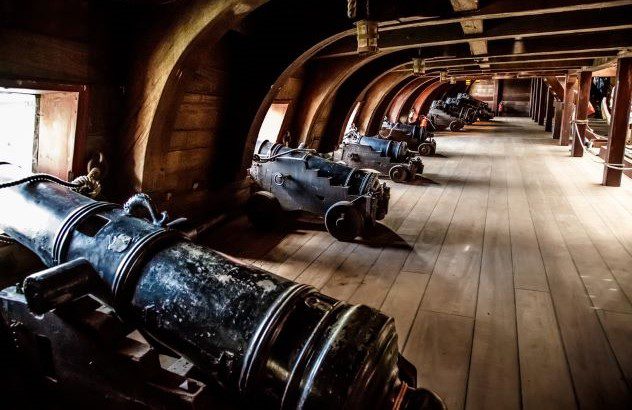
Modern life isn’t quite like what it used to be. There have been many changes passed down over the centuries, but one of the biggest among them is the general recognition that child labor ought not to be allowed. Past eras saw young children working horrific jobs as chimney sweeps or coal miners.
Luckily, present sensibilities rightfully dictate that those gigs simply aren’t acceptable anymore. And they’re not! But if you thought being a chimney sweep was brutal on young people, wait until you hear what they had to do during sea-borne warfare during the Age of Sail!
From the 16th century onward, young children served as “powder monkeys” on sailing vessels all over the world. Boys as young as seven years old were tasked with carrying live explosives and ferrying gunpowder all over naval ships and merchant boats. Most of these boys had been orphaned somewhere in their early life. With no guardians to look after them, they fell through the cracks of society.
Naval vessels needed small people to move explosive rounds and other war-related material around tiny holds throughout ships. The gig was deadly simply by the nature of the job’s requirements, so adults were wise to avoid it at all costs. Most adult men were simply too big for tiny ship holds, too. Thus, ship captains turned to young boys for the awful role.
During the battle, these powder monkeys would run up and down into the ship’s hold to grab sacks of gunpowder. They would scurry back up to the deck to hand deliver the powder to the cannon crew. Then, they’d go back down to make another explosive run. As you might expect, being in such close quarters to gunpowder while cannons are going off all around is not exactly a good spot to find oneself.
But these kids had no other recourse and no land-going future waiting for them back home. Thus, they died in anonymity and in great numbers—undoubtedly far greater than we may ever know, considering their low status. Speaking of low status, these powder monkeys were amazingly used by ship crews even into the very early 20th century. During the Civil War, Union and Confederate ships both employed powder monkeys to help the battle effort.
These boys were typically between the ages of 10 and 14. They were by far the lowest-status crewmen on board. Most were paid less than $6 a month for their unsung (and extremely deadly) efforts. And many perished in ocean battles, gunpowder accidents, and unpredictable explosions throughout the duration of the civil conflict.[9]
1 Air Force Pilot (World War I)
By now, we’ve learned all about war woes both on land and at sea. Why don’t we go high up into the sky for this last historical happening? In World War I, aerial artillery was a brand-new technology. The development of the aircraft just a handful of years before meant aerial aggressors could soar high into the sky, drop bombs, and wreak havoc from above. For powers like the United States, France, Britain, and Germany, who were locked in the terror of trench warfare on the ground below, air-based fighting sounded pretty good.
Of course, in practice, aerial assaults were total crapshoots. Chief among the problems was the fact that airplane technology was still very much in its infancy by the late 1910s. Air crews were routinely killed by in-flight accidents and major airplane malfunctions.
Some historians today estimate that the average lifespan of a World War I fighter pilot was a mere ten weeks from the time they took the job to the time they perished in an accident. Many didn’t even make it into battle. In Britain, more than 8,000 young would-be pilots died in training accidents while preparing for Great War battles.
Once in the sky to actually fight an enemy, the gig got even tougher. During World War I, planes were constructed out of wood and canvas. Their then-classic bi-wing design might have looked simple and iconic, but in practice, it was extremely faulty.
Wings often collapsed in on themselves, leading pilots to go down in seconds. If their primitive planes were hit by mortar fire, the wood-and-canvas build all but guaranteed they would immediately go up in flames. Pilots struggled to control these unpredictable machines once in the air, too. Any minor mishap could snowball into a catastrophe in an instant.
There was one more thing pilots didn’t have at the time: in-flight radio. With no communications system on board, they had no idea where enemy fighters were. Once they went up in the air, they often lost ground targets, too. And since they couldn’t communicate with their charges back at base, they couldn’t explain where they were flying.
It was a routine occurrence during World War I for fighter pilots to be shot down by their own men who simply failed to recognize their bi-planes high in the sky. Then, if pilots made it through all that, they faced the barrage of enemy aircraft guns and ground-to-air artillery to boot. It’s no wonder these men died in droves as the Great War raged on around them.[10]
